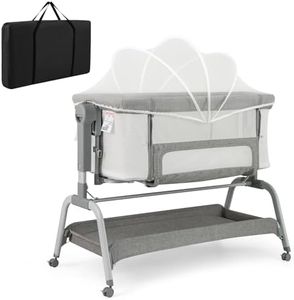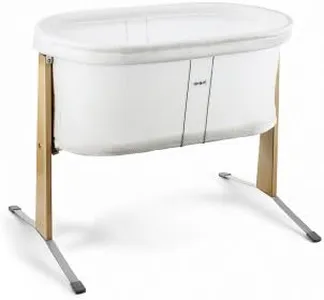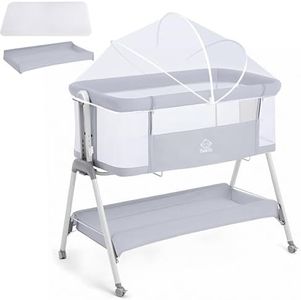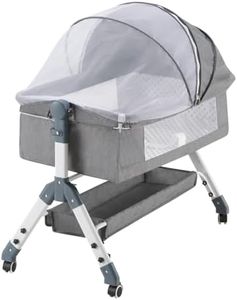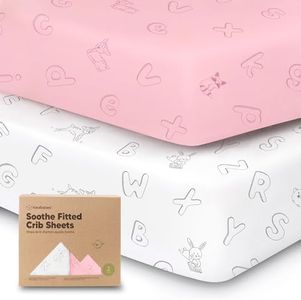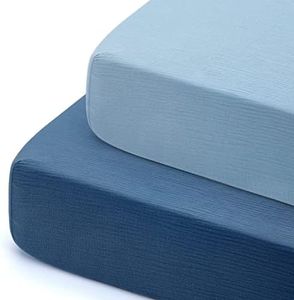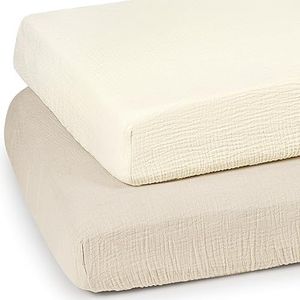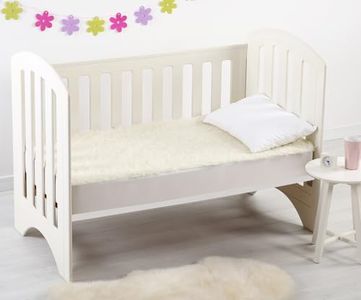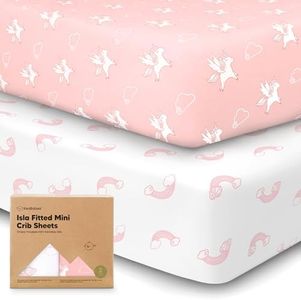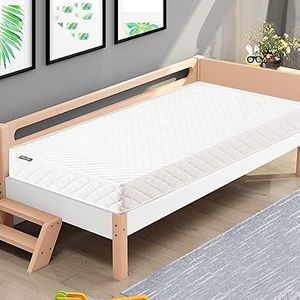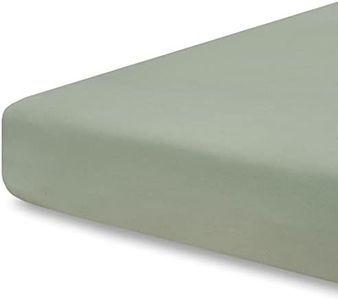We Use CookiesWe use cookies to enhance the security, performance,
functionality and for analytical and promotional activities. By continuing to browse this site you
are agreeing to our privacy policy
10 Best Baby Cribs
From leading brands and best sellers available on the web.Buying Guide for the Best Baby Cribs
When choosing a baby crib, your main goal is to provide a safe, comfortable, and practical sleeping space for your little one. Cribs come in many styles and with varying features, but it's important to focus on what will make daily use easier for you and safer for your baby. Think about the space you have available, your plans for the crib as your baby grows, and how easy it will be to use and clean. By breaking down key specifications and features, you can more confidently select the best crib to meet your family's needs.Safety StandardsSafety standards refer to the guidelines and certifications that ensure cribs are built to protect your baby from harm. This can include details like slat spacing, non-toxic finishes, and sturdy construction. It’s important because cribs that don’t meet current safety standards may pose risks such as entrapment, falls, or exposure to harmful chemicals. When considering safety, look for cribs that comply with the latest safety certifications and avoid older or modified cribs. Always prioritize cribs that come with clear documentation of passing safety checks, as your baby’s well-being comes first.
Crib Size and TypeCrib size and type dictate how the crib fits in your space and how long it will be suitable as your baby grows. Standard cribs offer more room but take up more space, while mini cribs are compact and perfect for smaller rooms or travel but may be outgrown more quickly. Convertible cribs can be transformed into toddler beds or even full-size beds, offering long-term use. To pick the right size and type, consider the size of your nursery, your plans for room-sharing or moving the crib, and whether you’d like a crib that grows with your child.
Mattress AdjustabilityMattress adjustability means you can change the height of the crib’s mattress platform. This is important for both your baby's safety and your comfort. A higher setting makes it easier to lift a newborn in and out without straining your back, while lower settings keep active babies safe from climbing out. Typically, cribs offer two to four mattress heights. Choose a crib with multiple height options if you’d like greater flexibility as your baby grows and becomes more mobile.
Material and FinishMaterial and finish describe what the crib is made of and how it’s coated or painted. Most cribs are made of solid wood, engineered wood, or metal. Solid wood is usually the most durable, while engineered wood and metal can be lighter or more affordable. The finish should be non-toxic and free from harmful chemicals, especially since babies tend to chew on crib rails. If your baby has allergies or sensitivities, go for cribs made with hypoallergenic materials and those clearly labeled as having a non-toxic finish to ensure a safe environment.
Ease of Assembly and MaintenanceEase of assembly and maintenance consider how simple it is to put the crib together and keep it clean over time. Some cribs feature straightforward instructions and few parts, while others might be more complex. Also, look at the design for cleaning purposes—smooth surfaces are easier to wipe down, and fewer crevices mean less dust and dirt buildup. If you’re not particularly handy or want a hassle-free experience, prioritize cribs with high ratings for easy setup and simple design for regular cleaning.
